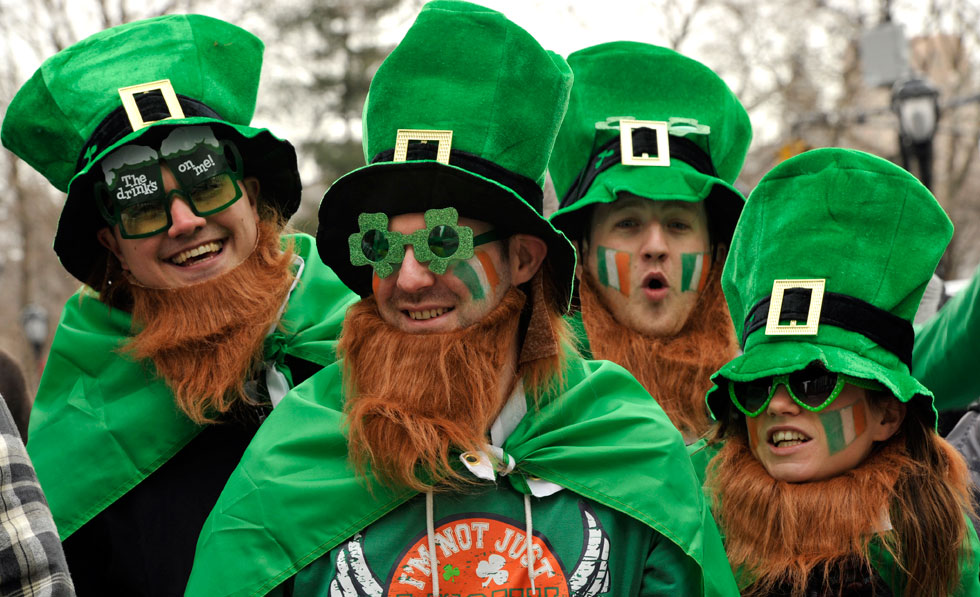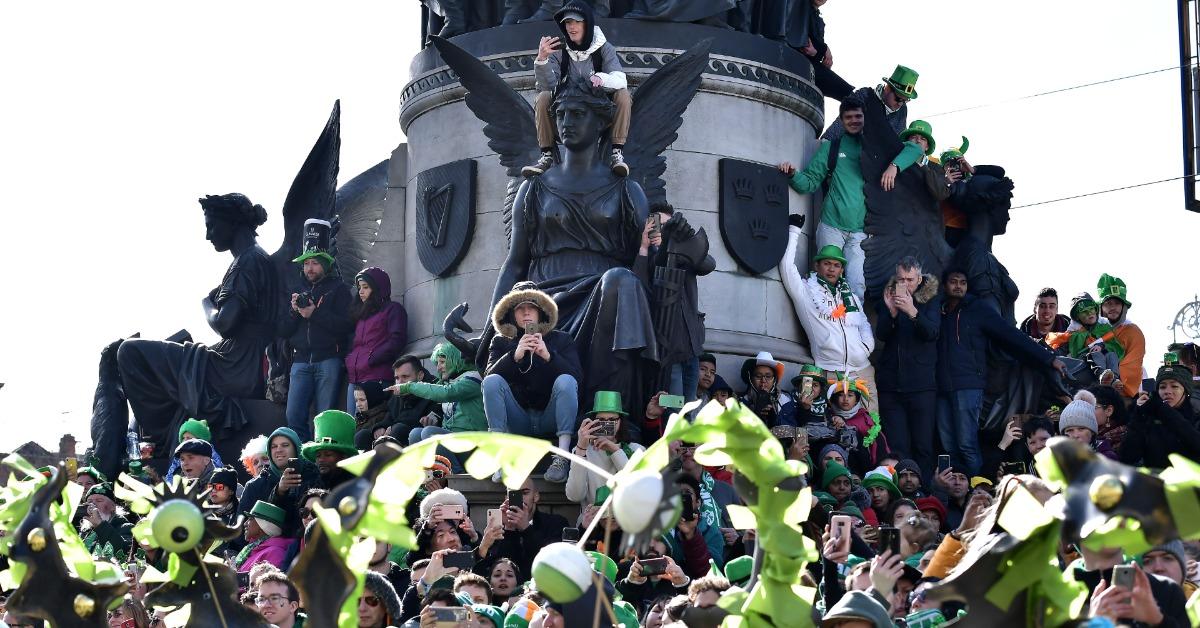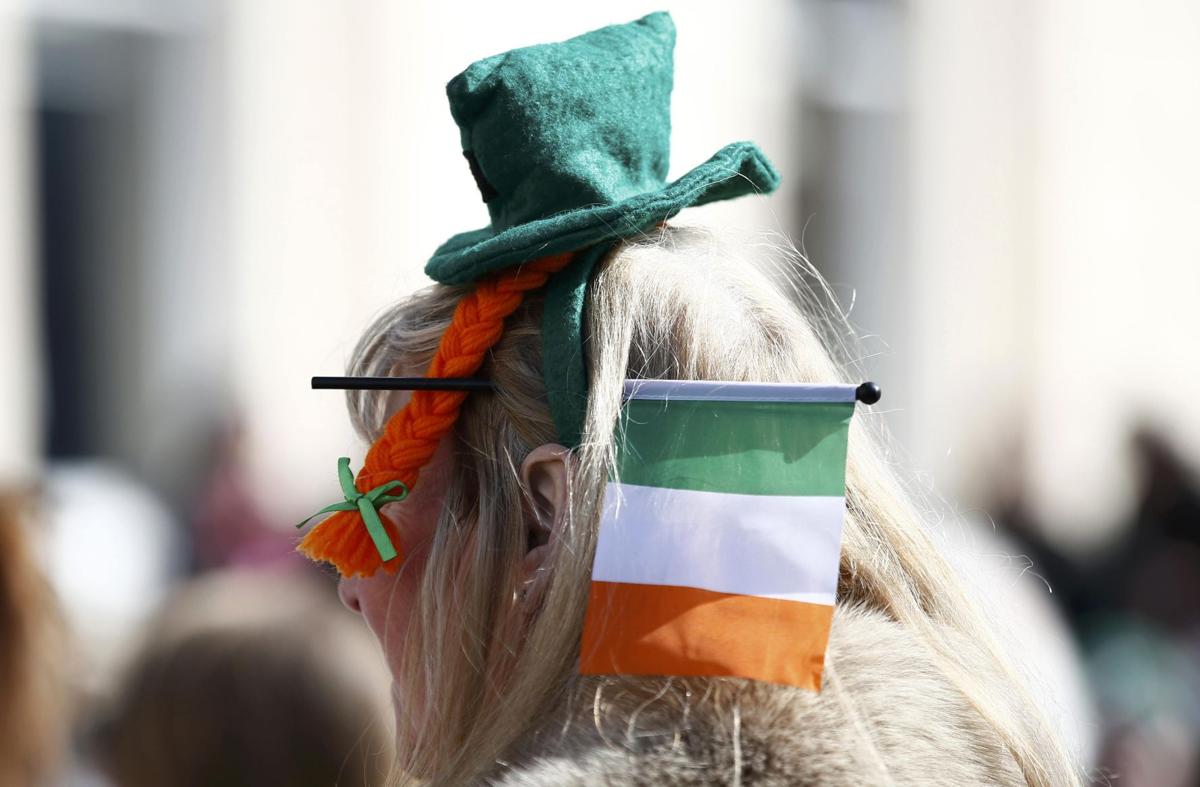Gallery
Photos from events, contest for the best costume, videos from master classes.
 |  |
 |  |
 |  |
 |  |
 |  |
 |  |
The feast day of the patron saint of Ireland, St. Patrick, is credited with bringing Christianity to the island, but he may be more widely known as the legendary figure who is said to have driven the snakes out of Ireland into the sea.St. Patrick’s Day is thought of as a day for celebrating, sometimes over imbibing, and wearing the color green. When you think St. Patrick's Day, you instantly think of the color green. Green clothing, green beer, green food; just green, green, green, everywhere green. But for some, orange is the color of choice to celebrate the patron saint of Ireland thanks to its strong ties to the day. Section 3: Navigating St. Patrick’s Day Traditions. Embracing Unity: As we navigate the complex symbolism surrounding orange on St. Patrick’s Day, it’s essential to emphasize the broader spirit of the celebration. St. Patrick’s Day has evolved into a global celebration of Irish culture, unity, and friendship. Therefore, on St. Patrick’s Day, Protestants protest by wearing orange instead of green. Ironically, no one wears white; the placement of the white stripe between the green and orange stripes on the Irish flag is supposed to symbolize the peace between the Roman Catholic majority and the Protestant minority. The color orange represents the sizable Protestant population within Ireland, and the green symbolizes Roman Catholicism, the religion that originally invented the holiday. Nonetheless, St. Patrick’s Day was co-opted by Protestants, who opted to don their representative orange instead of green for the day. Is it offensive to wear orange on St Patricks Day? Is [] To understand why some people wear orange, you first have to understand why people wear green. St. Patrick's Day is a Roman Catholic holiday that was first celebrated in Ireland starting in 1631. Incorporating orange and green into St. Patrick’s Day outfits can be a creative way to celebrate and acknowledge Ireland’s diverse heritage. History of Wearing Orange on St Patrick’s Day. Wearing orange on St. Patrick’s Day has its roots in Irish history, specifically, the events surrounding the Battle of the Boyne in 1690. While the vast majority of people wear green on St. Patrick’s Day, some may wear orange to symbolise Protestant heritage or solidarity with Northern Ireland. However, if you’d like to know why some people wear orange on St. Patrick’s Day in Ireland and elsewhere, you’ll find all you need to know below. Wearing orange on St Patrick’s Day These traditions have evolved over time and have been embraced by many around the world as part of the St. Patrick’s Day celebrations. Other Colors worn on St. Patrick’s Day besides Green. On St. Patrick’s Day, besides the predominant green, there are a few other colors that people wear, each with its own significance: Wondering if wearing orange on St. Patrick’s Day is offensive? Discover the history, meaning, and cultural significance of colors on March 17, plus stylish print-on-demand apparel ideas from Printblur. Do Scottish celebrate St Patrick Day? St. Patrick’s Day is the one day of the year that people celebrate Scots-Irish history here – and they do it rather superficially. What does wearing orange on St Patty’s Day mean? Therefore, on St. Patrick’s Day, Protestants protest by wearing orange instead of green. Ironically, no one wears white Wearing orange on St. Patrick’s Day may seem like a deviation from tradition, but it carries a significant meaning that adds depth to the celebration. The color green has long been associated with St. Patrick’s Day due to its connection with Ireland, also known as the “Emerald Isle.” Nonetheless, St. Patrick's Day was co-opted by Protestants, who opted to don their representative orange instead of green for the day. The white stripe separating the green and orange ones on the country's flag is indicative of the unity both religions maintain, meaning there's no bad blood no matter what color you don. St. Patrick’s Day usually conjures images of partying, Catholicism, Irish nationalism and, perhaps most famously, the color green: green clothes, green shamrocks, green beer and green rivers. The color orange represents the sizable Protestant population within Ireland, and the green symbolizes Roman Catholicism, the religion that originally invented the holiday. Nonetheless, St. Patrick’s Day was co-opted by Protestants, who opted to don their representative orange instead of green for the day. Is it OK to wear orange on St Patricks Day? Catholics [] To understand why some people wear orange, you first have to understand why people wear green. St. Patrick's Day is a Roman Catholic holiday that was first celebrated in Ireland starting in 1631. The Ultimate Guide to St. Patrick’s Day Colors: What Not to Wear. So, you’re prepping for St. Patrick’s Day and want to avoid a fashion faux pas (or worse, a pinch from a mischievous leprechaun!). The answer, according to tradition and a touch of historical context, is: you should probably avoid wearing orange on St. Patrick’s Day While most St. Patrick’s Day enthusiasts bust out their green clothing on March 17, there are some who would rather wear orange. The reason has everything to do with religion. Why is orange included in the St. Patrick’s Day colors? Orange represents the Protestant community in Northern Ireland. It symbolizes their resilience, determination, and commitment to their beliefs. It’s a recognition of the diversity within Irish identity. What is the significance of the shamrock on St. Patrick’s Day? On this Saint Patrick’s Day, you are likely to take part in that time-honored tradition of wearing green. If not, you risk punishment by pinch, an especially popular custom on schoolyards and
Articles and news, personal stories, interviews with experts.
Photos from events, contest for the best costume, videos from master classes.
 |  |
 |  |
 |  |
 |  |
 |  |
 |  |